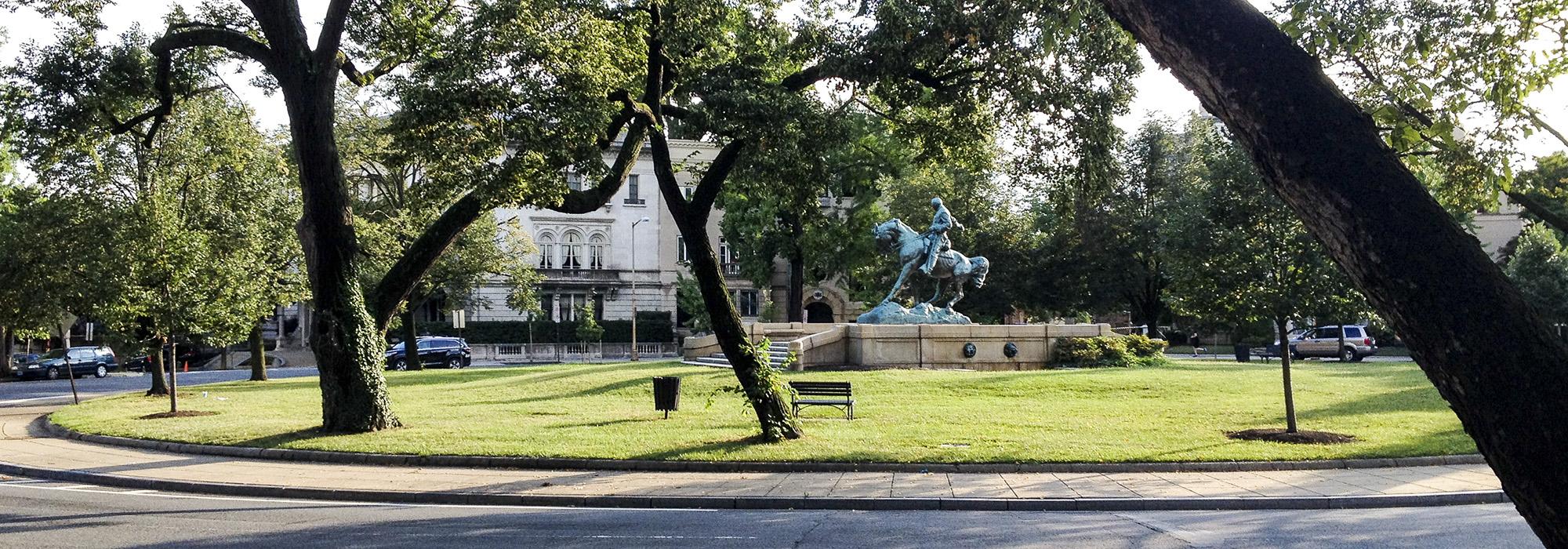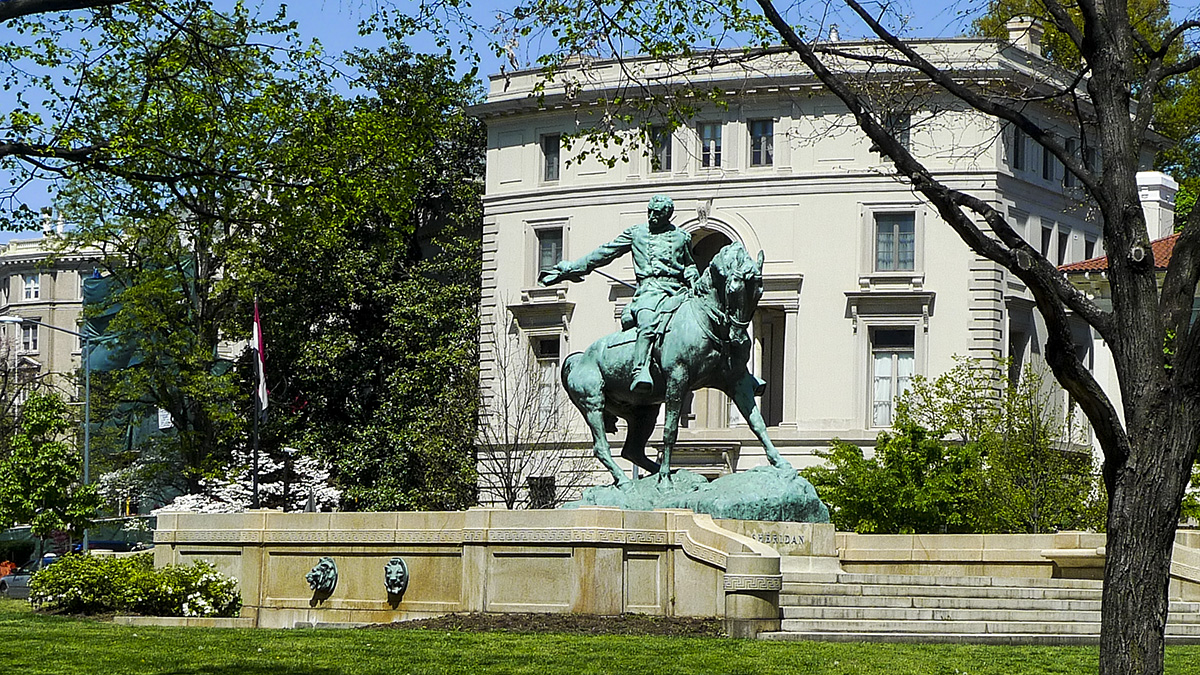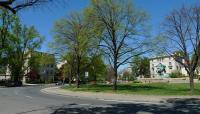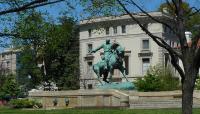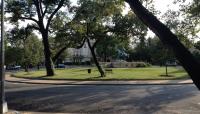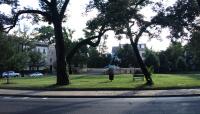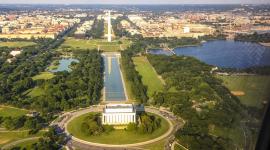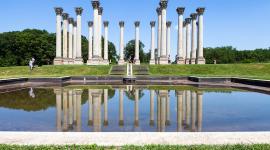Landscape Information
Inspired by Pierre Charles L’Enfant’s 1791 plan for public squares and circles at the intersection of major urban thoroughfares, this traffic circle was constructed almost a century later when Massachusetts Avenue was extended west to Wisconsin Avenue in 1886. In 1889, Congress appropriated $50,000 to erect a memorial of Union Army General Philip Sheridan, with Sheridan’s widow choosing the new traffic circle for its location. A bronze equestrian statue by Gutzon Borglum depicts General Sheridan at the Battle of Cedar Creek and was dedicated in 1908 at a ceremony attended by President Theodore Roosevelt. The statue rests on a plinth at the center of a square, low-walled stone platform, decorated on the exterior by bronze lion head fountains releasing water into small shallow pools embedded into the ground. The platform is accessed by stone steps on the northwest side.
The circle’s gently domed lawn was originally encircled by a ring of lindens (also found planted in double rows along Massachusetts Avenue) with a pedestrian sidewalk bordering the road. Park furniture including electric lamps and fixed benches was added throughout the first decade of the twentieth century by the Washington, D.C. Engineering Department. Subsequent rehabilitations of Massachusetts Avenue and Sheridan Circle by the National Park Service and Restore Massachusetts Avenue updated park furnishings and added London plane trees, tulip poplars and ginkgoes to replace some original lindens.
After the first foreign embassy in Washington, DC, was built on Massachusetts Avenue in 1873, several other foreign governments elected to establish their embassies in the same area, which came to be known as Embassy Row. Located at the center of Embassy Row, Sheridan Circle is surrounded by the embassies of South Korea, Romania, Latvia, and Ireland. In 1981, a circular bronze plaque designed by Ned Echeverria was added to the sidewalk on the circle’s south side to honor Chilean politicians Orlando Letelier and Ronni Karpen, who were killed by a car bomb at Sheridan Circle in 1976.
Sheridan Circle was listed in the National Register of Historic Places in 1974 as part of the Massachusetts Avenue Historic District.



